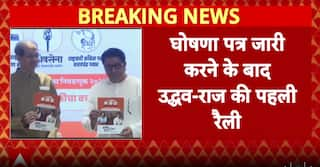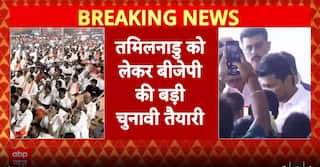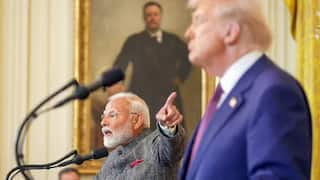Explorer
Baahubali 2 dazzles the world: Indian filmcraft makes global arrival

There was hardly any doubt that the sequel to Baahubali 1: The Beginning (2015) would rake in the big bucks; in just a week of its release Baahubali 2: The Conclusion (2017) has already crossed the lifetime collection of the original that stood at Rs. 650 crore, raking in Rs 792 crore.
But more than that the sequel has cemented the ‘visionary’ status of its creator SS Rajamouli.
The difference between a visionary and the rest of the lot is how they tend to see goals. Bruce Lee believed that a goal is not always meant to be reached and often it served simply as something to aim at.
With the release of Baahubali 2: The Conclusion Rajamouli joins a small list of filmmakers whose influence in times to come would surpass the films that are associated with their names.
It’s not just the stupendous box office success where it became the first Indian film to enter the fabled 100-crore club in 24 hours or the awe and reactions that Baahubali 2: The Conclusion is garnering makes the movie special.
Reams have already been written about the manner in which Rajamouli went about infusing life into his vision, the kinds of which Indian cinema has rarely witnessed. It is, in fact, too close to the event to actually gauge what Rajamouli might have truly achieved.
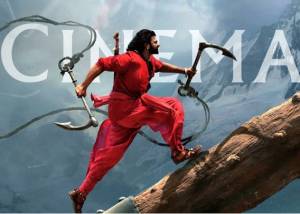 Image courtesy- Twitter @Baahubali
This completely homegrown epic has mesmerised audiences across the globe and some had even called the first Baahubali film as one that restores the faith in the blockbuster.
Picasso had once said that when he painted wild horses you might not see the horse but surely you’d see the wildness and that is apt to describe Rajamouli’s interpretation of India’s long-standing mythology and folklore tradition.
Baahubali stands apart from the standard definition of the Indian mythological film, as it is both a hat-tip to the traditional and the modern where not only the two blend seamlessly but also the past doesn’t burden the narrative.
The sentence - a Hyderabad-based filmmaker has come up with a Telugu film that cost Rs 180 crore (the first one and Rs. 250 crore for the sequel) featuring actors barely known in the rest of the country or the world that has debuted at Number 3 on US box office charts and not only met but also set a new yardstick for special effects in a global context – needs to be said aloud a few times to truly gauge what Baahubali 2: The Conclusion has managed.
For a lesser budget than what The Lord of the Rings trilogy would have cost, the Baahubali franchise has opened up a new business model for films that feature extensive visual effects.
It wouldn’t be totally wrong to call Baahubali 2 a unique example of ‘Make in India’.
Perhaps it’s a matter of time before more mainstream Hollywood studios begin to look at India as a filmmaking destination that is not limited to exotic or kitschy locations.
Image courtesy- Twitter @Baahubali
This completely homegrown epic has mesmerised audiences across the globe and some had even called the first Baahubali film as one that restores the faith in the blockbuster.
Picasso had once said that when he painted wild horses you might not see the horse but surely you’d see the wildness and that is apt to describe Rajamouli’s interpretation of India’s long-standing mythology and folklore tradition.
Baahubali stands apart from the standard definition of the Indian mythological film, as it is both a hat-tip to the traditional and the modern where not only the two blend seamlessly but also the past doesn’t burden the narrative.
The sentence - a Hyderabad-based filmmaker has come up with a Telugu film that cost Rs 180 crore (the first one and Rs. 250 crore for the sequel) featuring actors barely known in the rest of the country or the world that has debuted at Number 3 on US box office charts and not only met but also set a new yardstick for special effects in a global context – needs to be said aloud a few times to truly gauge what Baahubali 2: The Conclusion has managed.
For a lesser budget than what The Lord of the Rings trilogy would have cost, the Baahubali franchise has opened up a new business model for films that feature extensive visual effects.
It wouldn’t be totally wrong to call Baahubali 2 a unique example of ‘Make in India’.
Perhaps it’s a matter of time before more mainstream Hollywood studios begin to look at India as a filmmaking destination that is not limited to exotic or kitschy locations.
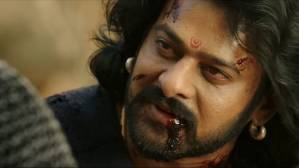 After Lord of the Rings Weta had Hollywood scrambling to them and if The Jungle Book, King Kong, Guardians of the Galaxy Vol.2, Furious 7, Dawn of the Planet of the Apes and many could be executed there, then it is time to get ready for a new era in Indian filmmaking.
Gautam Chintamani is a film historian and the author of the best-selling Dark Star: The Loneliness of Being Rajesh Khanna (2014) and The Film That Revived Hindi Cinema (2016)
Tweet him – http://www.twitter.com/gchintamani
Disclaimer: The opinions, beliefs and views expressed by the various authors and forum participants on this website are personal and do not reflect the opinions, beliefs and views of ABP News Network Pvt Ltd
After Lord of the Rings Weta had Hollywood scrambling to them and if The Jungle Book, King Kong, Guardians of the Galaxy Vol.2, Furious 7, Dawn of the Planet of the Apes and many could be executed there, then it is time to get ready for a new era in Indian filmmaking.
Gautam Chintamani is a film historian and the author of the best-selling Dark Star: The Loneliness of Being Rajesh Khanna (2014) and The Film That Revived Hindi Cinema (2016)
Tweet him – http://www.twitter.com/gchintamani
Disclaimer: The opinions, beliefs and views expressed by the various authors and forum participants on this website are personal and do not reflect the opinions, beliefs and views of ABP News Network Pvt Ltd
 Image courtesy- Twitter @Baahubali
This completely homegrown epic has mesmerised audiences across the globe and some had even called the first Baahubali film as one that restores the faith in the blockbuster.
Picasso had once said that when he painted wild horses you might not see the horse but surely you’d see the wildness and that is apt to describe Rajamouli’s interpretation of India’s long-standing mythology and folklore tradition.
Baahubali stands apart from the standard definition of the Indian mythological film, as it is both a hat-tip to the traditional and the modern where not only the two blend seamlessly but also the past doesn’t burden the narrative.
The sentence - a Hyderabad-based filmmaker has come up with a Telugu film that cost Rs 180 crore (the first one and Rs. 250 crore for the sequel) featuring actors barely known in the rest of the country or the world that has debuted at Number 3 on US box office charts and not only met but also set a new yardstick for special effects in a global context – needs to be said aloud a few times to truly gauge what Baahubali 2: The Conclusion has managed.
For a lesser budget than what The Lord of the Rings trilogy would have cost, the Baahubali franchise has opened up a new business model for films that feature extensive visual effects.
It wouldn’t be totally wrong to call Baahubali 2 a unique example of ‘Make in India’.
Perhaps it’s a matter of time before more mainstream Hollywood studios begin to look at India as a filmmaking destination that is not limited to exotic or kitschy locations.
Image courtesy- Twitter @Baahubali
This completely homegrown epic has mesmerised audiences across the globe and some had even called the first Baahubali film as one that restores the faith in the blockbuster.
Picasso had once said that when he painted wild horses you might not see the horse but surely you’d see the wildness and that is apt to describe Rajamouli’s interpretation of India’s long-standing mythology and folklore tradition.
Baahubali stands apart from the standard definition of the Indian mythological film, as it is both a hat-tip to the traditional and the modern where not only the two blend seamlessly but also the past doesn’t burden the narrative.
The sentence - a Hyderabad-based filmmaker has come up with a Telugu film that cost Rs 180 crore (the first one and Rs. 250 crore for the sequel) featuring actors barely known in the rest of the country or the world that has debuted at Number 3 on US box office charts and not only met but also set a new yardstick for special effects in a global context – needs to be said aloud a few times to truly gauge what Baahubali 2: The Conclusion has managed.
For a lesser budget than what The Lord of the Rings trilogy would have cost, the Baahubali franchise has opened up a new business model for films that feature extensive visual effects.
It wouldn’t be totally wrong to call Baahubali 2 a unique example of ‘Make in India’.
Perhaps it’s a matter of time before more mainstream Hollywood studios begin to look at India as a filmmaking destination that is not limited to exotic or kitschy locations.
 After Lord of the Rings Weta had Hollywood scrambling to them and if The Jungle Book, King Kong, Guardians of the Galaxy Vol.2, Furious 7, Dawn of the Planet of the Apes and many could be executed there, then it is time to get ready for a new era in Indian filmmaking.
Gautam Chintamani is a film historian and the author of the best-selling Dark Star: The Loneliness of Being Rajesh Khanna (2014) and The Film That Revived Hindi Cinema (2016)
Tweet him – http://www.twitter.com/gchintamani
Disclaimer: The opinions, beliefs and views expressed by the various authors and forum participants on this website are personal and do not reflect the opinions, beliefs and views of ABP News Network Pvt Ltd
After Lord of the Rings Weta had Hollywood scrambling to them and if The Jungle Book, King Kong, Guardians of the Galaxy Vol.2, Furious 7, Dawn of the Planet of the Apes and many could be executed there, then it is time to get ready for a new era in Indian filmmaking.
Gautam Chintamani is a film historian and the author of the best-selling Dark Star: The Loneliness of Being Rajesh Khanna (2014) and The Film That Revived Hindi Cinema (2016)
Tweet him – http://www.twitter.com/gchintamani
Disclaimer: The opinions, beliefs and views expressed by the various authors and forum participants on this website are personal and do not reflect the opinions, beliefs and views of ABP News Network Pvt Ltd
Follow Blog News on ABP Live for more latest stories and trending topics. Watch breaking news and top headlines online on ABP News LIVE TV
View More










